This is a very crude attempt from my end to read and interpret Ashtanga Hridayam, and explain it’s principles in treating diseases. I am a medical doctor training in Allopathy, and I am deeply passionate about human biology. Via a series of articles, I will be explaining Ashtanga Hridayam using layman’s language with a perspective of an allopathy practitioner. I intend to be thorough, yet simplistic. I would like to apologize right at the start if I make errors in this attempt.
In the last article I discussed concepts from the first chapter of Ashtanga Hridayam- “Ayushkamiya”. That article is available HERE.
In this article, I attempt understanding concepts presented in the second chapter of Ashtanga Hridayam. This chapter is called Dinacharya Adhyaya, which means “The Chapter on Daily Regimen”. I will combine translations from this chapter of Ashtanga Hridayam with my notes on those, based on my understanding of human biology.
Table of Contents
Prataruthana (getting up in the morning)
The healthy person should get up (from bed) during brahma muhurta, to protect his life.
The early hours of morning before the sun rises (from 3 a. m. to 6 a. m. ) is known as Brahma muhurta. As per Ayurveda Brahma muhurta is considered to be the best time for study and obtain brahma or knowledge. In true terms, obtaining brahma involves inner- realization and self- awakening. So, ideally, this is the best time to meditate.
Sleep is a natural repair process. During sleep body attempts to repair all the damage that was sustained while the person was awake. But the time the person wakes up, waste debris from the repair gets accumulated that needs to be discarded. If not discarded, the same debris can trigger additional inflammation, leading to diseases. A major part of early morning rituals prescribed in Ashtanga Hridayam is devoted towards the same. These practices involve increasing lacrimation, salivation and external scrubbing.
Dantadhavana (cleaning of the teeth)
After waking up, one should engage in elimination of urine and faeces. Then one should clean his teeth with twigs of arka, nyagrodha, khadira, karanja, kakubha, etc. which are astringent, pungent, and bitter in taste; the twigs should be of the size of the tip of the little finger in thickness and twelve fingers’ breadth in length and straight, its top made like a soft brush (by chewing), the teeth should be cleaned without hurting the gums.traditionrolex.com
As per Ashtanga Hridayam, not everyone should use toothbrush for cleaning teeth.
Persons suffering from indigestion, vomitting, dyspnoea, cough, fever, facial paralysis, thirst, ulcerations of the mouth, diseases of the heart, eyes, head and ears, should not make use of the tooth brush for cleaning the teeth. Note- forbidding use of tooth brush does not mean that these people should not clean their teeth at all. They should make use of soft powder of other drugs instead of twigs.
The reason for this advice is linked to the fact that brushing gums leads to inflammation. While this “daily inflammation” might not cause any pathologically significant damage in most people, but in few people with pre-existing inflammatory condition such brushing of teeth can add to progression of disease.
Anjana (collyrium to the eyes)
Ashtanga Hridayam advises applying Sauviranjana daily to the eyes in the morning after cleaning teeth.
Sauviranjana (commonly called as kajal in India) is good for the eyes. Eye is full of tejas (light) and has risk of troubles especially from slesman (kapha); hence rasanjana should be used once a week, to drain it (kapha) out.
Sauviranjana is the ore of antimony sulphide that was traditionally available as shining black pebbles in the river bed of Sauvira country (modern Afghanisthan and Beluchisthan ) . Traditionally kajal was prepared from this ore along with some other plant products and was used in ancient times both as a medicine and a cosmetic. Rasanjana is prepared from the decoction of daruharidra (Berberis aristita). It is an irritant and so used to produce more lacrimation.
After applying kajal, the person should make use of navana (nasal drops) , gandusa (mouth gargles), dhuma (inhalation of smoke), and tambula (chewing of betel leaves).
Tambala sevana (betel-chewing)
Tambula (betel chewing or pan-chewing) is an ancient custom in India. Vagbhata in Ashtanga sangraha prescribes two betel leaves, one small sized arecanut, little quantities of slaked lime and extract of khadira (known as katha) as the ideal combination.
Betel chewing increases salivation. This helps irrigate openings around intra-oral region and cleanse impurities that gathered while the person was asleep.
Fragrant substances like cardamom, cloves, etc, are also permitted in other texts,. But, remember, none of the ancient texts mention tobacco, and such other intoxicating substances to be mixed with betels. This custom of chewing tobacco or using it in other forms like snuff, smoking (bidi, cigarette etc. ) seems to have come into vogue during the Mughal rule in India.
Chewing of betel leaves, arecanut., lime and other fragrant substances has definite medicinal properties and so beneficial for health; chewing of tobacco along with betel leaves can be injurious to health and is not prescribed by Ayurveda.
Betel-chewing is unsuitable to those suffering from wounds, bleeding diseases, dryness and redness of the eyes, poisoning, unconsciousness and intoxication
Ahhyanga (oil-massage and bath)
Abhyanga (oil-massage and bath) should be resorted to daily. It wards off old age, exertion and aggravation of vata. It bestows good vision, nourishment to the body, long life, good sleep, good and strong skin. It should be done specially to the head, ears and feet.
Abhyanga should be avoided by persons suffering from aggravation of kapha, who have undergone purification procedures (like emesis, purgations etc.) and who are suffering from indigestion.
Abhyanga involves smearing the head and body with medicated oil and massaging them mildly. It is very beneficial not only for the healthy but also for persons suffering from disorders of the nervous system etc.
Vyayama (exercise)
Early morning exercise helps body achieve lightness, ability to do hard work, keen digestion, depletion of excess fat, and good physique.
Persons suffering from diseases of vata and pitta; children, the aged and those having indigestion may avoid exercising.
Persons who are strong and who indulge in fatty foods regularly; in cold seasons and spring (season) should do it (exercise) to half of their strength (capacity) only; while others (and in other seasons) should do it mildly.
Half the capacity of the person is understood by appearance of perspiration on his forehead, nose, axilla, joints of the limbs and feeling of dryness of the mouth.
After exercise all the parts of the body should be massaged comfortably.
Thirst, emaciation, severe dyspnea (difficult breathing), bleeding diseases, exhaustion, feeling of debility ( even without any work), cough, fever and vomiting are caused by excess of exercise.
Those who indulge daily in too much of physical exercise, keeping awake at nights (loss of sleep), walking long distances, excessive sexual intercourse, too much of laughing, speaking and such other strenuous activities perish, just as a lion, after vanquishing an elephant.
This example of lion killing an elephant is a simile to impress upon avoiding excess of physical work. The lion though vanquishes and kills the elephant, dies soon after wards due to severe strain and consequent exhaustion. Thus, Ashtanga Hridayam is cautious in recommending daily exercise and discourages excessive physical activity. This recommendation is tangentially opposite to today’s popular beliefs.
Excess exercise can actually do more harm than the benefits we expect from it. I had written number of articles on this aspect earlier. Now, reading Ashtanga Hridayam simply strengthens my conviction regarding what I said in those articles. I am providing few links to those article HERE and HERE.
Udvartana-(massage)
Udvartana (massaging the body with soft, fragrant powders) mitigates kapha, liquifies the fat, produces stability (compactness, strength) of the body parts and excellence of the skin.
Snana-(bath)
Snana (bath) improves appetite, sexual vigour, span of life, valour (enthusiasm) and strength; removes itching, dirt, exhaustion, sweat, stupor, thirst, burning sensation and sin. Pouring warm water over the body bestows strength, but the same over the head, makes for loss of strength of the hair and eyes.
Bath is contra-indicated for those suffering from facial paralysis, diseases of the eyes, mouth and ears, diarrhoea, flatulence, pinasa (discharge of foul smelling liquid from the nose), indigestion and who have just taken food.
It is important to note that Ashtanga Hridayam is not too much fascinated with the effects of taking bath in terms of cleansing the body. And this lack of enthusiasm is supported by other ancient texts as well.
As a general rule, taking bath should the last act of all the morning activities. Use water at temperature comfortable to you and start with cleaning the lower part of the body, avoiding head and face till the end. Atleast- don’t start by pouring water over head.
Sadvritta (good conduct)
While impurities of body can be dealt with using above mentioned routines, impurities of mind needs to tackled using right behaviour and conduct. Impurities of mind is often the root cause of many diseases. Hence, in this chapter, Ashtanga Hridayam lays down deep details how one should conduct thoughts and feelings and social actions to keep mind and body healthy. Few of these might not be exactly relevant in today’s times- but the principles behind these guidelines remain relevant and are timeless.
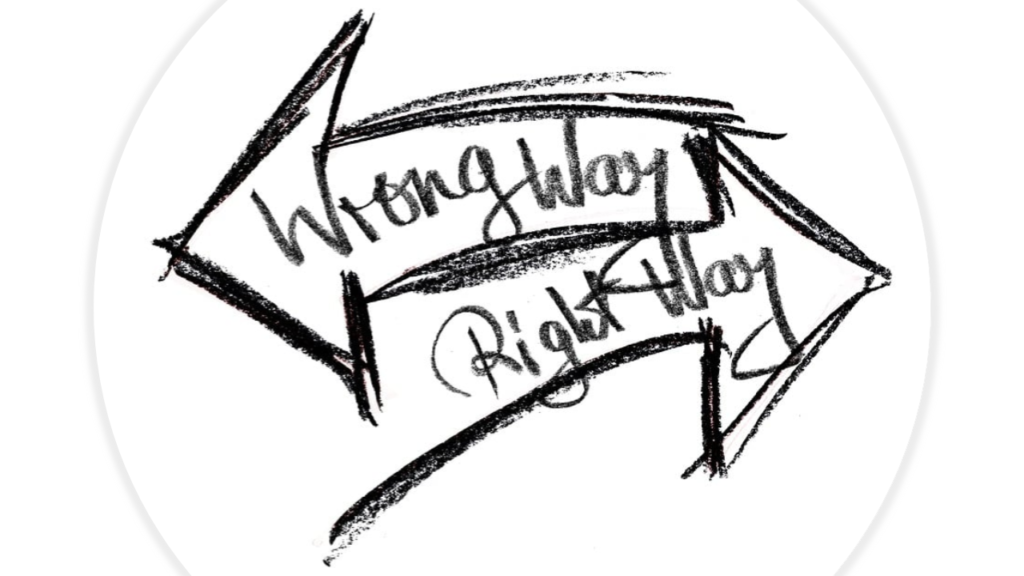
Ashtanga Hridayam says that a person resort to eating food only after the previous meal has been properly digested. One must always eat food that is suitable to him and in limited quantity. None of the bodily urges (hunger, thirst etc) should not be initiated prematurely by force without the need raised by the body itself. And when one is attending to these bodily urges, one should not be engaged in any other work.
Also, when one is suffering from any curable disease, one should avoid doing anything until the disease is completely cured. While this may not be possible in today’s busy life of 21st century, these recommendations call for focus and prioritization.
Ashtanga Hridayam recognizes that all human activities are meant for the happiness of all the living beings. Such happiness is based on dharma (righteousness, right moral conduct). Hence every person should aways adopt a conduct of righteousness.
Friends should be served with affection and good deeds whereas others (foes, wicked persons) should be kept at a distance.
Astanga Hridayam notes ten sins that one must avoid to be on the morally righteous track that is conducive to healthy mind and body. These 10 sins are: hithsa (causing injury, torture etc.), steya (stealing, robbing), anyathakama (unlawful sex activity), paisunya (abusive or harsh speech), anrta vachana (scloding, speaking untruth); sambhinna alapa (speech causing dissension, seperation, breaking of company), vyapada (quarrel, intention of harming), abhidya (jealousy, not tolerating good of others) and drigvi paryaya (finding fault, misunderstanding, faithlessness etc. with scriptures, elders etc).
Of the ten sins mentioned, the first three pertain to the body, next four to the speech and the last three to the mind.
Those who have no means of livelihood, who are suffering from diseases and who are afflicted with grief should be helped to the utmost extent.
Even the insects and ants should be treated with compassion and kindness (just as one’s own self).
God, cow, brahmana, elders, the physician, king and guests should be worshipped.
Beggars should not be disappointed, abused or objected.
One should be very helpful even to his foes, even though they are not helpful. One should maintain a balanced mind and similar attitude during the period of prosperity as well as while facing calamity. One should be envious of the cause (of wealth, happiness, well-being etc. of others) but not be jealous of the effect (money, happiness etc.).
One should speak appropriate to the occasion, with words which are good, in brief, which is not untrue and which is pleasing.
One should not shy away from starting a conversation with others first- such conversation should be with a pleasant face. One should be virtuous and kind. When with others one should not be comfortable and happy just alone and must attempt to make others also happy. One should neither believe everybody nor suspect everyone. One should not reveal that someone is his foe, and that he is an enemy of someone else. One should not make public the insults he had and the disaffection towards his superiors.
Keeping in mind the nature of the people, one should deal with them in such manner as best pleasing to them.
The sense organs should neither be troubled too much nor should they be coaxed (fondled) too much. What this means is you should definitely enjoy, but never get addicted to those enjoyments.
One should not engage himself in occupations that are devoid of the three pursuits: dharma (righteousness), artha, (wealth) and kama (pleasure). One should enjoy the occupation and should always follow the righteous path.
In all dealings and activities, one should adopt the middle path only and avoid the extremes.
One should cut his hair, nails, and mustaches (not allow them grow long), keep his feet and orifices of waste materials (ears, nose, eyes, urethra and anus) clean; take bath daily, put on scents and good dress which is not superfluous but is pleasant to look at.
One should always wear precious stones, potent hymns and herbs (kept inside amulets) on the person (body), one should walk holding an umbrella, putting on foot-wear and looking straight to a distance of four arms-length in front of himself. In case of urgent work at nights, one should go equipped with a baton, head-dress and an assistant.
While modern science tends to place hymns and precious stones on the superstitious realms, it would not be wise to simply discount them as untrue. As Carl Sagan described- “absence of evidence does not mean evidence of absence”
One should not invade (trample/ set foot on /traverse/ occupy) on the shade of a holy tree on which deities reside, materials (or men) of worship, banner and unholy things, heap of ash, husk and dirt, sand dunes, boulders, places of bali ( offerings to gods, demons etc.) and bathing.
One should not swim across rivers with arms, should not walk facing huge fire, should not travel in a risky boat, not climb a tree doubtful of strength; or ride on a vehicle in a bad condition.
One should not sneeze, laugh or yawn without covering his mouth.
One should not blow his nose (except for forcing out the dirty excretion); not scratch the ground without any reason, not do ugly movements of the parts of the body and not sit on one’s own heels for a long time.
One should stop the activities of the body, of speech and of the mind before getting exhausted. One should not keep his knees above for long period (keeping erect the legs folded at the knees while sleeping or standing on the hands keeping the legs up etc.).
One should not reside at night on trees, meeting place of three roads, vicinity of a holy tree, meeting place of four roads and a temple. One should not reside, even during daytime, in a place of slaughter, a forest, a haunted house and burial ground.
As per ancient vedic texts, places like haunted house or burial grounds bear energies that can have bad influence on health. As I already explained, a lot of these are paranormal ideas that is not currently supported by modern science. But modern science itself is evolving and we are slowly re-discovering any ancient beliefs that were earlier discarded as superstitions.
One should not gaze at the sun for long time, not carry heavy weight on his head, not see continuously objects which are minute, shining, dirty and unpleasant.
One should not engage in selling, brewing, distributing free or receiving alcohol.
The person should avoid the direct breeze, sunlight, dust, snow, hard breeze. One should not sneeze, belch, cough, sleep, dine or copulate in improper postures. One should avoid the shade of a scaffold, places hated by the king (or government), company of wild animals, biting animals and those with horns; of mean, wicked, and cunning persons; avoid quarrel with good men.
It is quite intriguing that Ashtanga Hridayam asks to avoid taking food, copulation, sleeping and studying in the “two sandhyas”. Two sandhyas refer to the time of meeting of the night and sunrise, and of the sunset and the night.
One should avoid the food given by enemies, given during sacrificial ceremony, that given by prostitutes and merchants. One should not make sound with the body parts, mouth and nails, nor shake the hand and hairs; should not move in between two spaces that contain water or fire or idols of worship. One should avoid the smoke of a cadaver, too much indulgence in alcohol, and believing and independence for women.
For an intelligent person the whole world is a teacher. Hence one should imitate the world after carefully considering their meaning and effects of such actions.
Compassion with all living beings, granting of gifts, controlling the activities of the body, speech and mind; feeling of selfishness in the interests of others (looking after the interest of others as his own)- these are sufficient rules of good conduct.
He, who constantly analyses how his day and night are passing, and chooses the path of righteousness will never become a victim of sorrow.
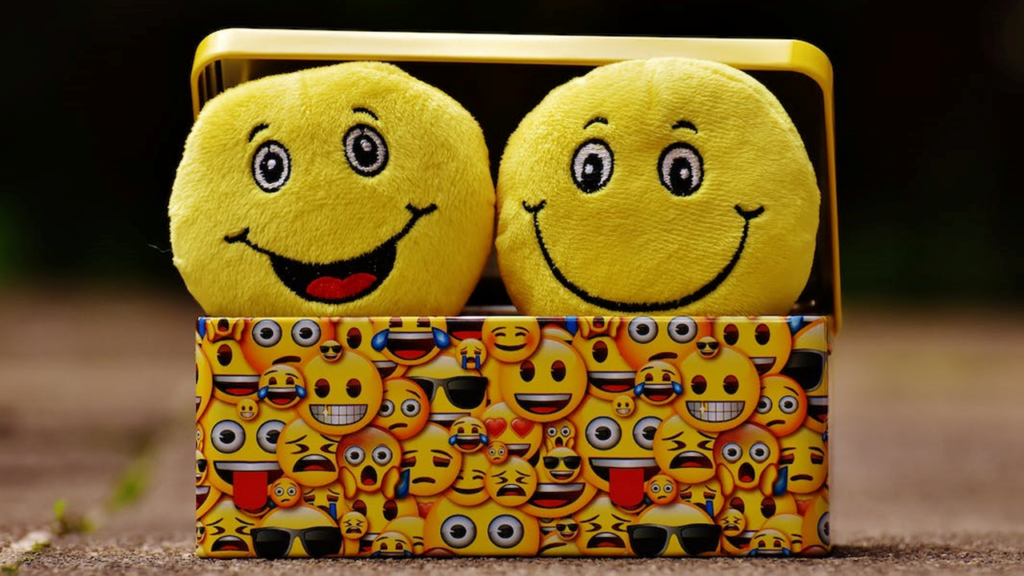
This is where the second chapter of Ashtanga Hridayam concludes.
Ashtanga Hridayam is a text on Ayurveda and focusses solely on maintenance of good health. Yet, it elaborates quite a lot of how people should behave with each other in a society. Good medicine cannot be practiced in isolation, and there has to be a political will to bring necessary societal reforms. Similarly, medical practices too need to be cognizant of the existing social structure, and must be flexible to accommodate the same.
Many of the advice on social conduct laid down in Ashtanga Hridayam might not be relevant today, as our society is now dramatically different from what it was during vedic times. But, the principles behind those recommendations are still valid and will remain so in future as well.
I hope I was able to do justice in decoding Chapter 2 of Ashtanga Hridayam. In the next article, I will commence dissecting Chapter 3.

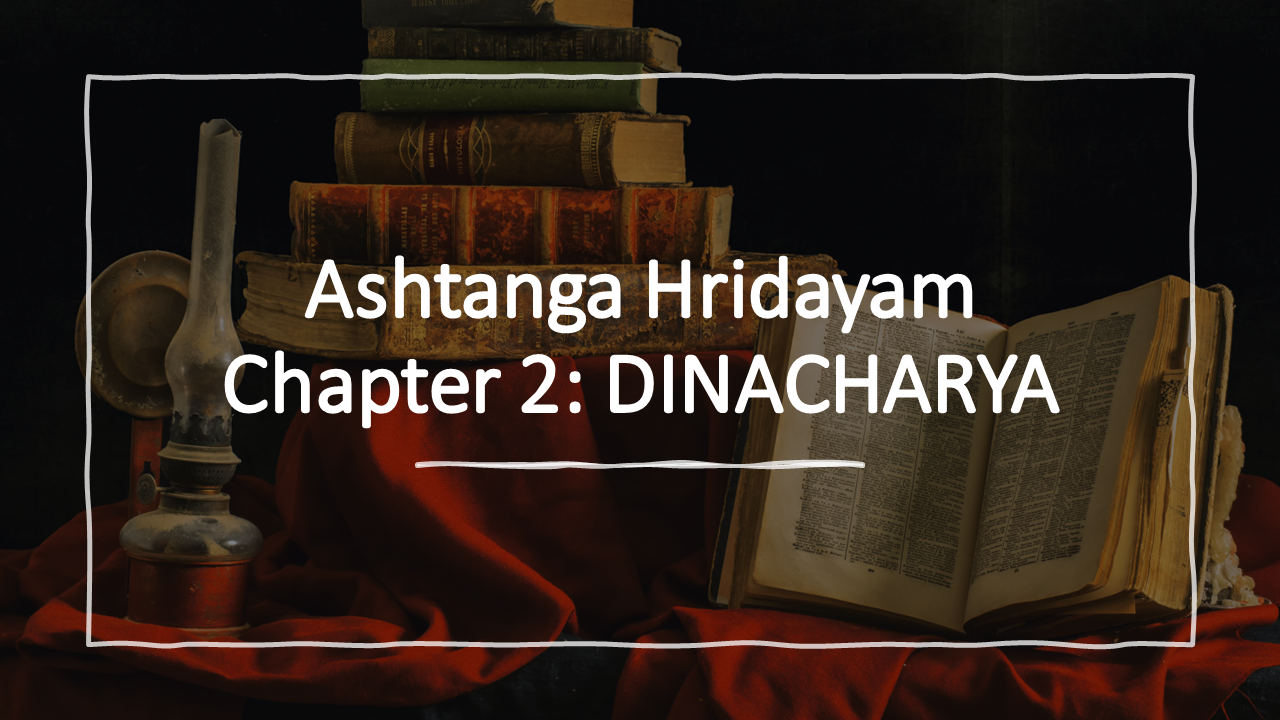

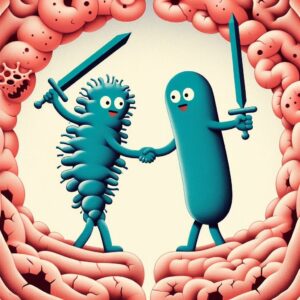
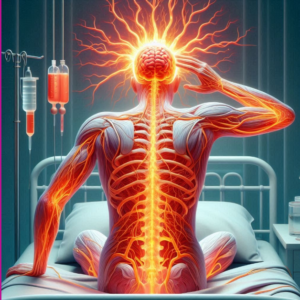

Simply wish to say your article is as amazing. The clearness in your post is just nice and i could assume you’re an expert on this subject. Well with your permission let me to grab your feed to keep updated with forthcoming post. Thanks a million and please carry on the gratifying work.
I was recommended this website by my cousin I am not sure whether this post is written by him as nobody else know such detailed about my trouble You are amazing Thanks
Wow wonderful blog layout How long have you been blogging for you make blogging look easy The overall look of your site is great as well as the content
you are in reality a just right webmaster The site loading velocity is incredible It seems that you are doing any unique trick In addition The contents are masterwork you have performed a wonderful task on this topic
I discovered this brilliant website earlier this week, they provide awesome content for their audience. The site owner works hard to educate followers. I’m thrilled and hope they keep up their great service.